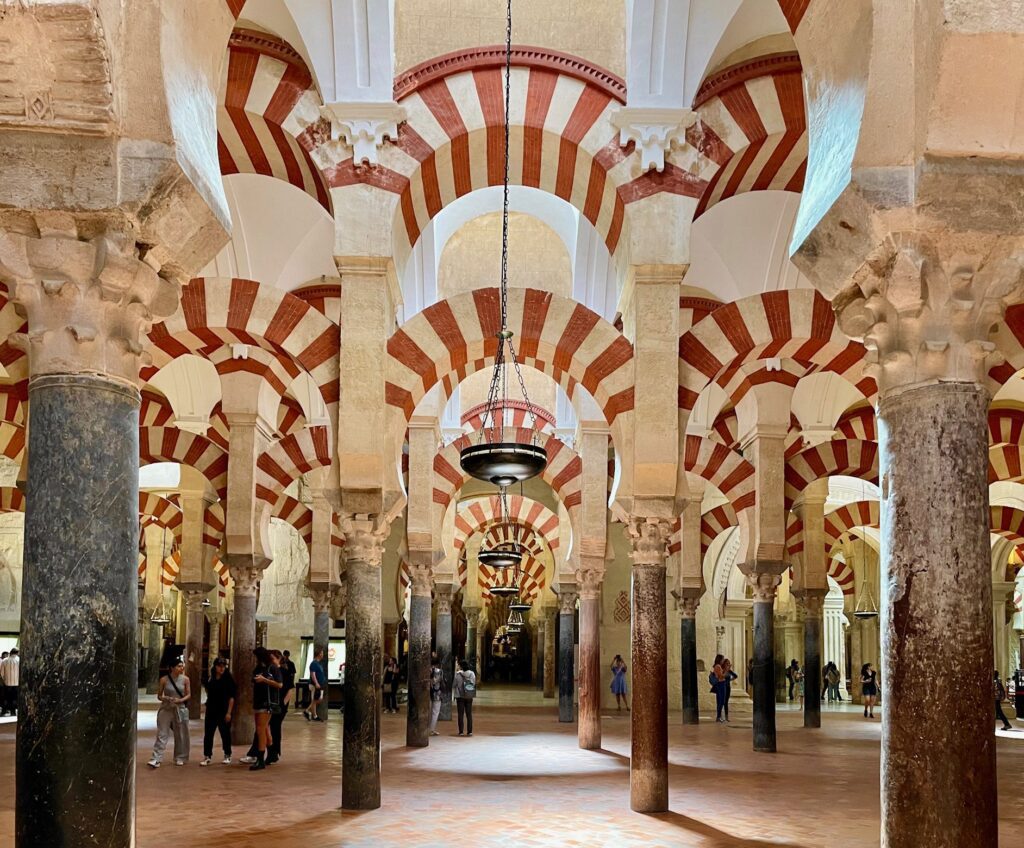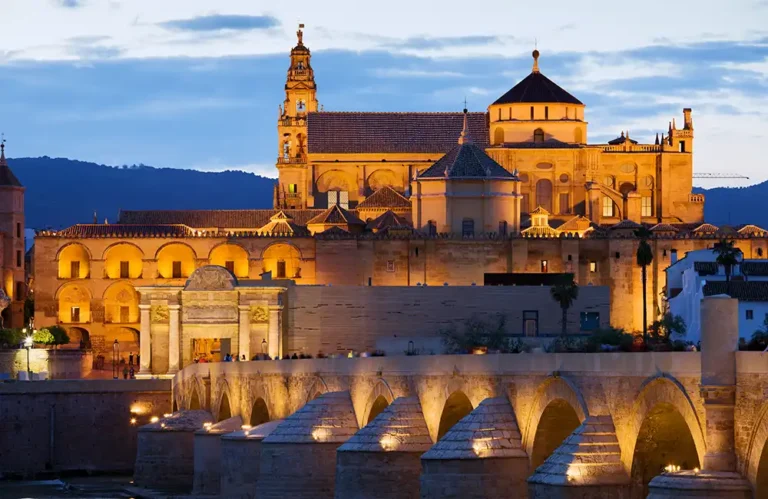Nestled in the heart of Córdoba, the Mezquita de Córdoba stands as a timeless witness to the city’s rich and complex history. Far more than a simple building, it is a living narrative of cultural convergence, where centuries of Islamic, Christian, and European influences intertwine to create one of the most remarkable architectural masterpieces in the world.
From its origins in the 8th century under the Umayyad dynasty, the Mezquita became a symbol of Córdoba’s golden age as the intellectual and cultural hub of Al-Andalus. Its vast halls, adorned with endless columns and striking arches, not only reflect the technical ingenuity of its creators but also the spiritual aspirations of a civilization that sought harmony between art, faith, and function.
When the Christians reconquered Córdoba in the 13th century, they chose to preserve this majestic mosque rather than erase it. By integrating Renaissance-style cathedrals within the mosque’s original structure, they created a unique architectural fusion that tells a story of coexistence, adaptation, and respect for heritage. Walking through the Mezquita today is like stepping into a multi-layered time capsule, where every arch, mosaic, and column whispers stories of the past.
Visitors are not just observing a monument; they are experiencing a living testament to the evolution of culture, religion, and artistry in Spain. Whether you are a history enthusiast, an architecture lover, or a traveler seeking profound cultural experiences, the Mezquita de Córdoba promises to leave an unforgettable impression.
Table of Contents
Toggle🕰️ Historical Background
Construction of the Mezquita began in 784 AD under the Umayyad ruler Abd al-Rahman I. Córdoba at that time was a thriving center of Islamic culture in Al-Andalus. Over the centuries, the mosque expanded multiple times, reflecting the city’s wealth and cultural significance.
Following the Christian Reconquista in 1236, King Ferdinand III converted the mosque into a cathedral rather than demolishing it. Renaissance-style naves and chapels were added inside, creating a unique architectural fusion that blends Islamic and Christian traditions. This coexistence makes the Mezquita an extraordinary historical case study

🏛️ Architectural Highlights
The Mezquita’s architecture is a visual marvel:
The Hypostyle Hall: Houses over 850 columns made from marble, granite, and jasper, with red-and-white striped arches creating a hypnotic sense of infinity.
The Mihrab: A stunning prayer niche adorned with Byzantine mosaics and Quranic inscriptions, showcasing intricate craftsmanship.
The Christian Cathedral: Added in the 16th century, this Renaissance-style nave contrasts with the Islamic hall, offering a visual narrative of Spain’s layered history.
Patio de los Naranjos (Courtyard of the Orange Trees): A tranquil courtyard with fountains and orange trees where worshippers once performed ablutions before prayer.
The careful blend of these architectural elements has made the Mezquita a benchmark of both Islamic and Christian artistry
🌍 Cultural Significance
The Mezquita de Córdoba represents centuries of cultural and religious coexistence. Muslims, Christians, and Jews influenced each other’s traditions, creating a unique cultural mosaic. UNESCO recognized its importance in 1984, declaring it a World Heritage Site. Today, the Mezquita stands as a testament to tolerance, art, and architectural brillianc
📍 Visiting the Mezquita
Location: Heart of Córdoba’s old town, near the Roman Bridge.
Opening Hours: Typically open daily; early mornings are less crowded. Free entry often available between 8:30–9:30 am.
Tickets: Approximately €11 for adults, with student, child, and group discounts.
Best Time to Visit: Spring and autumn for pleasant weather.
Nearby Attractions:
Alcázar de los Reyes Cristianos
Guadalquivir River walks
Córdoba historic center
Tips: Take a guided tour to fully appreciate the architectural details and historical context. Don’t forget a camera—the Mezquita’s arches and mosaics are breathtaking.
✨ Fun Facts
The Mezquita’s arches and columns were inspired by Roman architecture but evolved into a distinct Andalusian style.
Some columns in the mosque were reused from ancient Roman and Visigothic buildings, showcasing a blend of eras.
The Mezquita hosts occasional classical concerts, using its acoustic qualities to enhance the experience.
Córdoba was once the largest city in Europe during the 10th century, making the Mezquita a center of intellectual and cultural life
The Mezquita de Córdoba is far more than a historical monument; it is a living testament to Spain’s rich tapestry of cultures, religions, and artistic achievements. Every arch, column, and mosaic tells a story of centuries of coexistence and innovation, offering visitors a profound insight into the legacy of Al-Andalus and the Christian Reconquista.
Exploring the Mezquita allows travelers to step back in time, experiencing a unique blend of Islamic and Christian architectural brilliance, while also appreciating Córdoba’s pivotal role in European history. For anyone passionate about history, architecture, or cultural heritage, a visit to this iconic landmark is truly unforgettable.
To learn more about the Mezquita de Córdoba and plan your visit, you can consult these official and authoritative sources:
Whether you are walking through the Hypostyle Hall, admiring the intricate Mihrab, or strolling through the serene Patio de los Naranjos, the Mezquita promises an experience that connects you with centuries of history and cultural fusion—making it one of Spain’s timeless gems.



[…] Mezquita de Córdoba: Spain’s Timeless Gem […]
[…] a city of historical splendor, is famous for the Mezquita-Catedral, a stunning example of Islamic and Christian architecture. Wander through the Jewish Quarter, visit […]